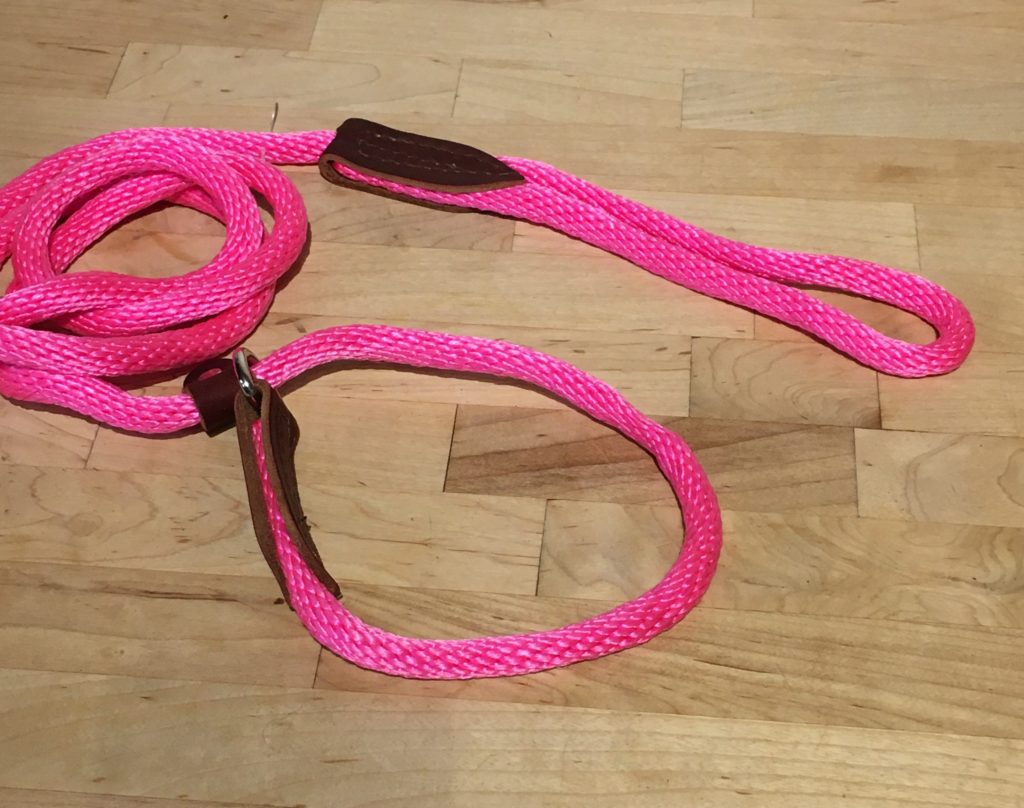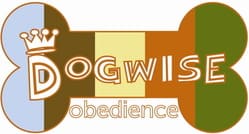“The purpose of all training equipment is to eventually not need it”
Rob Dunn-VP/Trainer:Triple Crown Academy, Hutto TX
With the plethora of dog training equipment out there it’s hard to decide which type of leash or collar will be best for your dog. I generally start with the basics and make adjustments as needed.
My basic training equipment list: Flat collar, 6′ nylon slip lead, 30′ Nylon long lead.
Flat collar -A regular, everyday collar that clips or buckles closed. A flat collar allows you to grab hold of your dog while serving as a place to hang her ID tags.
Nylon Slip Lead -For basic obedience training, I start with a 6′ nylon slip lead that slips over the dog’s head and will tighten as the dog pulls and loosen as tension is decreased. Unlike clipping a leash to your dog’s flat collar, the slip lead enables your dog to clearly discern whether or not there is tension on the leash. This is the first step in all leash work. A 6′ leash is just long enough to give your dog the freedom to explore and sniff while keeping her in close proximity to the heel position.
The slip leash is also an excellent tool for the reactive dog or a dog with aggression issues. It allows you to direct where your dog is looking. The slip lead also eliminates the need for a separate training collar.
How to:
There is usually a little leather strip at the neck ring and a small leather tab. When on your dog’s neck, the leather strip should rest under your dog’s throat. The little tab slides up and down the leash, enabling you to tighten it. Adjust the leash so that it sits either above or below the dog’s flat collar. Adjust the tab so that the slip lead is loose but not so loose that it will fall off the dog’s head should she bend to sniff the ground. Do not forcefully “Pop” on this leash. We are simply teaching your dog that when there is tension on the leash, she cannot continue to move forward. See my article on Loose Leash Walking to get you started.

30′ Nylon Line- a must for working on and strengthening recall. Start recall training with the 6′ lead, gradually adding distance until your dog is consistently coming when called at 30′. When you have reached this goal, leave the long line attached but do not hold it. Let it drag on the ground. I prefer to attach the long line to a no function body harness at this phase. If your dog does not come when called, step on the line while encouraging her to come to you. You are kindly teaching your dog that your requests are not optional. Until your dog is 100% reliable, you must be able to physically back up your commands. Take a look at Come/Recall to get you started.
Other Useful Tools:
Flexi-Leashes-offer up to 26′ of retractable length that retreats into a plastic large handle. Flexi-leads can be handy for house training or exercising your dog. I do not recommend using the flexi for general training and walks because there will always be some tension placed on your dog’s neck when the leash is unlocked. One of the big goals in dog training is to teach your dog that tension on the leash is NEVER acceptable when out walking. You do not want your dog to think that a tense leash is the status quo.
Martingale Collar- Also called the “greyhound collar”, this is a very affective no- slip, adjustable collar. The Martingale looks like a flat collar and will tighten with tension but only to a certain point so it cannot choke or injure. This is also a good collar for dogs who have a history of trying to back out of the collar.
Head Halti/Gentle Leader/Sense-Ation Harness-all humane and affective ways to keep your dog from pulling. The Halti and the Gentle leader work like a horses halter-wherever the head goes, the body must follow. However, I do not focus on these products in training as they are considered to be more of a management tool. If you do not use the item, the dog will go back to pulling. Head halters must be properly fitted or they can cause damage to your dog’s neck or eyes. Follow the instructions carefully. Do not use the Flexi-lead with this kind of harness.
The Sensi-Action harness fits around your dog’s torso and attaches to the leash from the side making it difficult for your dog to pull. These are very handy for small dogs. Do not use the Flexi-lead with this type of harness.
I never recommend a standard harness for dog walking. The sensation of the harness actually encourages your dog to pull! That is why sled dogs wear them! When I see a dog wearing a standard harness that is connected to a Flexi-Lead (has constant tension), I am never surprised to hear that, “She’s a puller!”
